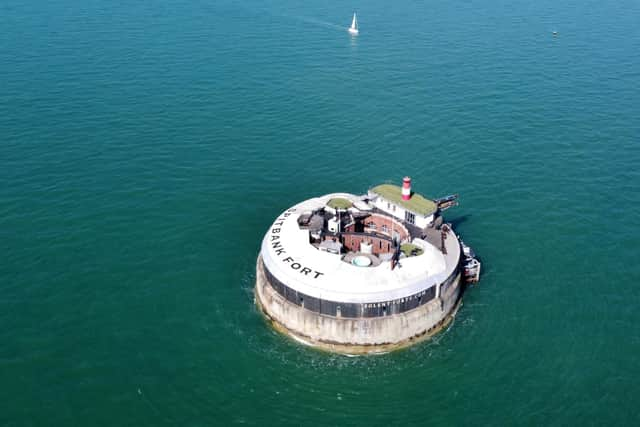Solent Forts: Permission to allow Spitbank Fort to be used as a home is extended
and live on Freeview channel 276
Fort owner Clarenco LLP said the change of use from a luxury hotel to housing was needed because it was no longer financially viable as a business.
Permission was first granted by the city council in 2020 and had been dye to expire in August but the renewal will extend this for another year while a new buyer is sought for the historic structure.
Advertisement
Hide AdAdvertisement
Hide Ad‘The proposal [will] secure the continued use of an existing building and safeguard the future maintenance of a designated heritage asset,’ a report by council planning officers said.


Spitbank has been owned by Clarenco, also known as Solent Forts, since it was bought for £1m in 2009 and converted from a museum into a hotel.
During the pandemic the fort was put up for sale, along with No Man’s Fort and Horse Sand Fort, for a combined £9m. Spitbank was marketed again earlier this year for £3m, listed as a nine-bed home.
Advertisement
Hide AdAdvertisement
Hide Ad‘Whilst the space has provided for a successful operation over the years hosting numerous unique events, the continued running costs and complexities associated with its current operation has seen the applicant seek an alternative, more viable use of the fort,’ a letter submitted with the application said.
‘The existing use is not protected and a residential use on the site has been previously acceptable, with permission recent granted in 2020 but never implemented.
‘The scheme will allow for a unique luxury residential dwelling and will contribute towards meeting the need for housing in Portsmouth.’
It added that work carried out immediately after the fort was bought means it can be used as a home without any renovation, meeting the requirements of its scheduled monument status.
Advertisement
Hide AdAdvertisement
Hide AdThe council report approving the renewal of the temporary permission agreed with this point, saying the need for no work to the structure meant the change from commercial use to residential would have no negative effect.
Construction of the fort, which is the smallest of the three, took 11 years and was finished in 1878. The building was in use as a fort until 1956 when the coastal artillery was abolished.
In 1982 it was sold and turned into a museum which was open to the public until the 2009 sale.